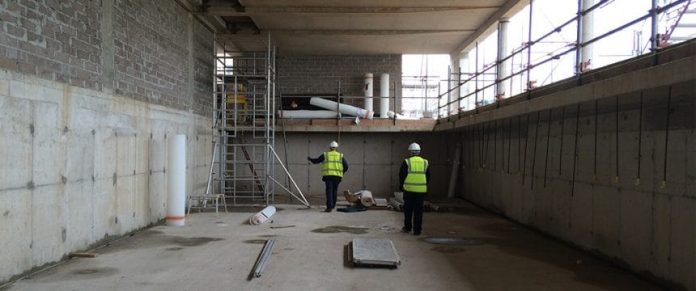“Basement waterproofing” is the generic name given to using a variety of techniques to prevent water from penetrating into a basement. Having a basement waterproofed correctly will ensure that a damp, dark cellar can be converted into dry, habitable space
Prior to the introduction of waterproof membranes and full drainage systems, the traditional method of waterproofing was tanking. Tanking was effectively the only way to stop the ingress of water into the basement. An issue with tanking is that if there is any settlement in the building, it would often lead to small, fine hairline cracks, which would effectively breach the tanking system and allow water into the basement area.
Depending upon the hydrostatic external pressure, it is very difficult to gauge whether tanking will actually work as required. It’s also impossible to know whether over a period of time, the basement would be subjected to extremes of hydrostatic pressure. At some point, the weakest point will give way and potentially lead to substantial ingress of water.
Types of waterproofing systems
Changes made three years ago in the NHBC building standards deem that new builds –subject to their warranty – with basements or other raised ground levels over 600mm, must have two forms of waterproofing, ie external as well as internal waterproofing. The different types of waterproofing systems are referred to normally as types A, B or C. However, type A membrane is only used where the space adjacent is habitable or non-fully-bonded.
In brief terms, a type A waterproofing system is an external barrier that is fitted to the outside walls. Type B is the use of a waterproof concrete and type C is a full internal drainage system. These types of waterproofing are normally required to be installed in compliance with British Standards, in particular, BS 8102:2009, which is the code of practice for protection of below ground structures against water from the ground.
BS 8102: 2009 clearly lays down the principles of both designing and installing a belowground waterproofing system.
No two systems or sites are ever the same and every specification has its own challenges and therefore each design should be looked upon as an individual specification.
Waterproofing design specialists
Any belowground specialist designing and specifying such waterproofing systems should carry the waterproofing qualification of CSSW, which stands for a certificated surveyor in structural waterproofing.
In commercial installations, it may also be necessary to engage the services of a qualified structural engineer. This will occur if the design structure of the proposed foundation works is altered. This will ensure that the waterproof system cannot only be installed correctly but will work efficiently as required.
Carrying out the waterproofing works
For a waterproofing project to run smoothly, it is recommended that a waterproofing design specialist works very closely with the builder, architect or specifier concerned in order that the right waterproofing system is installed with the minimum amount of hassle.
If the main contractor is also undertaking the initial building works, it is important that they understand the waterproofing requirements needed when installing the slab. Namely, factoring in the future installation of a perimeter drainage channel and sump and pump chamber.
When specifying pumps as part of the waterproofing project, it is advisable to have two pumps per sump chamber as a precautionary measure should one pump fail. A waterproofing technician can install alarms that can send a message to a mobile phone making the owner aware that there has been a power failure and the pump has stopped working. A battery backup system may also be incorporated within the sump and pump chamber so that in the event of a power failure, the basement or belowground void does not become overrun with water as the battery-operated pump will kick in.
One should never underestimate the damage that can be caused by belowground flooding and it is imperative that any such works are undertaken by a waterproofing design specialist who can offer meaningful and long-term guarantees. The Timberwise belowground waterproofing team are specialists in their field and have successfully completed thousands of waterproofing projects.
Conclusion
In conclusion, there is now a tried and tested method for providing long-term, belowground waterproofing systems. However, the devil is always in the detail of the specification and the quality of the installation. For this reason, it is recommended that waterproofing must only be undertaken by specialist waterproofing specifiers and installers.

















